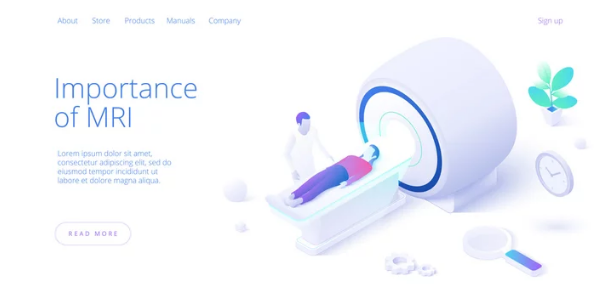Magnetic Resonance Imaging (MRI) and visual computing are joining forces to improve how medical images are captured, processed, and understood. This interdisciplinary approach combines powerful imaging techniques with advanced computing methods to create clearer, faster, and more detailed views of the human body. By integrating MRI with visual computing, experts can unlock new ways to analyze complex medical data, leading to better diagnosis and treatment.
This collaboration involves using artificial intelligence, machine learning, and data fusion from multiple imaging sources. These tools enhance the quality of MRI scans and make interpreting the images easier for doctors. As these technologies evolve, they help overcome the limitations of traditional MRI, such as handling large data sets and variability across machines.
The future of MRI-driven visual computing holds promise but comes with challenges like ensuring reliability and standardization across different systems. Researchers continue to work on creating solutions that can work in diverse clinical settings, making advanced imaging more accessible and effective.
Key Takeways
- Combining MRI and visual computing improves medical image quality and analysis.
- AI and data fusion help address traditional MRI limitations.
- Ongoing work focuses on making these technologies reliable and widely usable.
Interdisciplinary Synergy of MRI and Visual Computing
MRI and visual computing work together to improve how medical images are captured, analyzed, and interpreted. The fusion of these fields results in new imaging techniques, better computational tools, and enhanced medical applications, especially for diagnosis and visualization.
Innovative Techniques Integrating MRI and Visual Computing
Several new methods combine MRI with visual computing to increase image clarity and interpretability. One key approach is image fusion, where MRI data is combined with other imaging modalities like PET scans. This fusion improves the quality of visual data by blending anatomical and functional information.
Another technique involves machine learning algorithms that analyze MRI data to detect patterns invisible to the human eye. These algorithms can enhance tumor detection or map brain pathways more precisely.
Besides fusion, virtual reality (VR) technologies are being used for MRI preparation. VR helps patients understand the scanning process, reducing anxiety and improving image acquisition quality.
Advantages of Combining Imaging and Computational Methods
Combining MRI and visual computing provides several clear benefits. First, it enables more accurate diagnosis by revealing details that single imaging methods might miss. Computational tools help interpret complex datasets, often reducing human error.
Second, this synergy allows for real-time image enhancement during scanning or surgery. Surgeons and radiologists can use processed images for better guidance.
Third, the approach supports personalized medicine by linking imaging results with patient-specific data. This increases treatment precision and effectiveness.
Table: Key Advantages
| Advantage | Description |
|---|---|
| Accuracy | Detects subtle changes and abnormalities |
| Real-time Enhancement | Provides instant image improvements during procedures |
| Personalization | Tailors diagnosis and treatment based on detailed data |
Applications in Medical Visualization and Diagnosis
The integration of MRI with visual computing directly impacts medical visualization. It produces 3D models of organs, enabling doctors to view internal structures in new ways. This helps in planning surgeries or radiation therapy.
In diagnosis, AI-driven analysis of MRI scans helps identify diseases like brain tumors and neurological disorders earlier and more reliably. Algorithms can segment images, highlight abnormalities, and predict disease progression.
Moreover, interdisciplinary methods support robotic-assisted surgery, where precise visual feedback from MRI guides robotic tools in delicate procedures.
These applications improve patient outcomes by making diagnosis faster, more precise, and less invasive.
Future Prospects and Challenges in MRI-Driven Visual Computing
MRI-driven visual computing is evolving with advances in data handling, patient privacy, and teamwork across fields. These elements play key roles in improving imaging technologies and clinical outcomes.
Emerging Trends in Data Visualization
New MRI techniques produce large, complex data sets requiring advanced visualization tools. 4D imaging, which shows dynamic anatomy over time, is becoming more common. This helps doctors track changes in moving organs or blood flow with better clarity.
AI-powered visualizations improve the detection of subtle abnormalities by enhancing image quality. Interactive platforms allow clinicians to explore layered data, like combining MRI with other scans.
However, handling large data volumes demands high computing power. Edge computing is being explored to process data closer to patients, which speeds up analysis without sending huge files over networks.
Ethical Considerations and Data Security
MRI-driven computing raises privacy issues because medical images contain sensitive patient data. Secure storage and encrypted transmission methods are critical to prevent unauthorized access.
The use of AI introduces questions about bias and fairness. Algorithms must be tested on diverse populations to avoid misdiagnosis. Transparency in AI decision-making is essential.
Ethicists and legal experts increasingly participate in research teams to address these concerns. Policies must balance innovation with patient rights and data protection, ensuring trust in new technologies.
Collaborative Research and Development Initiatives
MRI visual computing projects often involve teams from multiple disciplines. Radiologists, computer scientists, engineers, and ethicists work together to improve both algorithms and hardware.
Many efforts focus on making MRI faster and more patient-friendly through AI-driven reconstruction methods. Partnerships between academic institutions and industry are common for translating new approaches into clinical tools.
Funding agencies also support interdisciplinary projects that aim to create portable MRI devices and eco-friendly designs. Collaboration speeds up innovation and helps standardize technologies for wider adoption.
Also Read :
